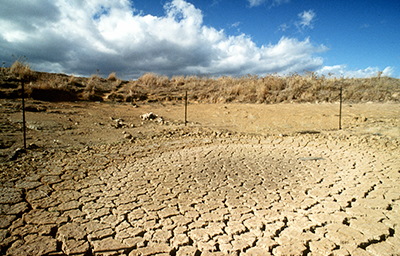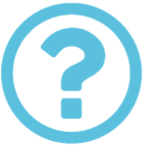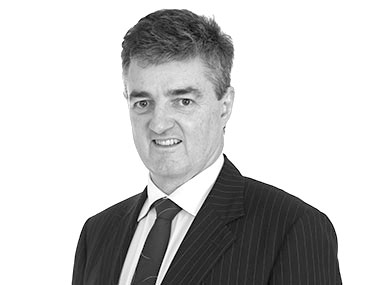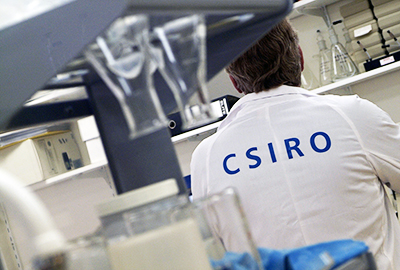A STRATEGY to remove barriers in Australia’s agribusiness sector and improve competitiveness has emerged through the Federal Government’s new white paper.
The Agricultural Competitiveness White Paper is positioned by Prime Minister Tony Abbott and Agriculture Minister Barnaby Joyce as an investment in Australia’s farmers and competitive strengths in agriculture.
In practical terms, the white paper has a list that aims to lower taxes on the sector, cut red and green tape, build infrastructure, encourage trade, develop northern Australia, and support business to innovate and create jobs, Mr Abbott said.
“A strong agriculture sector contributes to a strong economy – and that means more jobs, more exports, higher incomes and better services to the community,” he said. “We’re determined to make the sector even more competitive and to deliver practical actions that will keep our farmers and farming families profitable and resilient.” 
The white paper and the 2015 Budget combined offer significant tax changes for farmers.
Banks are now able to use farm management deposits (FMDs) as a business loan offset, reducing interest costs estimated at up to $150 million a year, from July 1, 2016. Also from that date, farmers can opt back into income tax averaging after 10 years, while farmers can also double their FMDs to $800,000.
The immediate tax deduction for fencing announced in the Federal Budget has already had a positive effect on the sector, as has the tax deduction for the cost of new water infrastructure. Farmers have also positively received the accelerated three-year depreciation of capital expenditure on fodder assets.
On the investment front, Mr Abbott said the government would will help farmers achieve a better return at the farm gate by investing $11.4 million to boost ACCC engagement with the agricultural sector including a new Commissioner expert in agriculture, plus $13.8 million in a two-year pilot program to provide knowledge and materials on cooperatives, collective bargaining and innovative business models.
“This will help farmers to establish alternative business models, including cooperatives, and manage contract negotiations,” Mr Joyce said.
INFRASTRUCTURE FOCUS
Mr Joyce said as part of the government’s commitment to reduce red tape from the economy by $1 billion each year, an additional $20.4 million has been made available to streamline agricultural and veterinary chemicals approvals.
“Improved country of origin labelling will also let consumers know where food is grown and processed,” Mr Joyce said. There was also a big focus on infrastructure, especially water resources for agribusiness.
“The white paper builds on the government's investments to build 21st century water, transport and communications infrastructure, including a new National Water Infrastructure Fund,” Mr Joyce.
The government announced a $500 million National Water Infrastructure Fund, made up of $50 million to undertake the detailed planning necessary to inform future water infrastructure investment decisions and $450 million to construct national water infrastructure, in partnership with State and Territory governments and the private sector. He said $200 million of the fund will be dedicated to northern Australia projects.
As part of the infrastructure push, CSIRO’s TRAnsport Network Strategic Investment Tool (TRANSIT) would be expanded to ensure future decisions on transport infrastructure investment deliver maximum benefit, the Prime Minister said.
“The government is already delivering on its commitment to invest $50 billion for current and future infrastructure,” he said. “The $29.5 billion National Broadband Network (NBN) rollout will improve access to technology and give farmers more market options.
“The Government is investing an additional $60 million on top of the $100 million Mobile Black Spot Programme to improve mobile coverage across regional Australia.”
There was also $35 million allocated for local infrastructure projects to help communities suffering due to drought, along with other drought management strategies.
“Australia will always stand by farmers in drought,” Mr Abbott said.
Including initiatives announced in the 2015 Budget, the white paper provides long-term support for famers when they need it most, he said.
There were to be up to $250 million in Drought Concessional Loans each year for 11 years; $22.8 million to increase Farm Household Allowance case management for farmers; increased financial counselling services and improved access to community mental health; access for farmers to their FMDs when needed, without losing tax concessions; $25.8 million over four years to manage pest animals and weeds in drought-affected areas; and the Federal Government has offered farmers “advice and help” from the Australian Taxation Office.
SMARTER APPROACH
Mr Joyce said the white paper supports “a smarter approach to farming based around a strong research and development system that underpins future productivity growth”. He said there was also an effective natural resource policy in place “that achieves a cleaner environment as part of a stronger Australia”.
The white paper also provides the agriculture sector access to the most advanced technologies and practices by investing $100 million to extend the Rural R&D for Profit Programme to 2021–22 and $50 million to boost emergency pest and disease eradication capability. There is also $50 million for better tools and control methods against pest animals and weeds and $1.4 million to match industry levies and contributions in the export fodder and tea tree oil industries.
Mr Joyce said $1.2 million was set aside for the Rural Industries Research and Development Corporation. He also said the government was already helping farmers access skilled and reliable labour by focusing on better training through the $664 million Industry Skills Fund and making visa programs more flexible, such as expanding the Seasonal Worker Programme to all agricultural industries and removing the annual cap.
Mr Joyce said that while the Federal Government was opening new export markets, it would also protect Australia's highly prized biosecurity status, “which underpins our valuable exports”.
He said there would be $200 million to improve biosecurity surveillance and analysis nationally and $30.8 million to break down technical barriers to trade, along with the appointment of five new overseas agriculture counsellors.
An investment of $12.4 million was being made to modernise Australia’s food export traceability systems “to further enhance our food safety credentials,” Mr Joyce said.
www.agwhitepaper.agriculture.gov.au
ends


 How to resolve AdBlock issue?
How to resolve AdBlock issue? 




